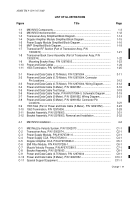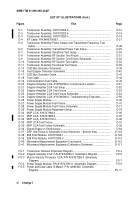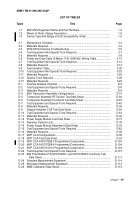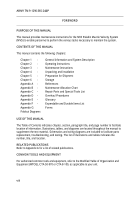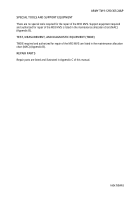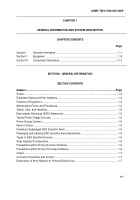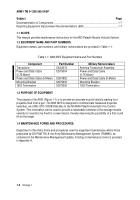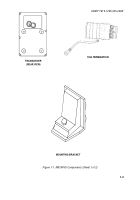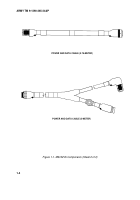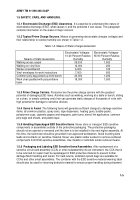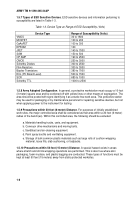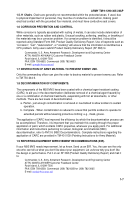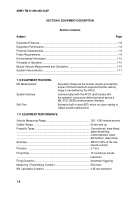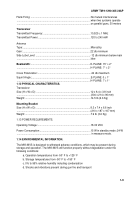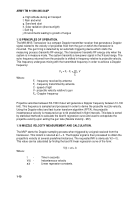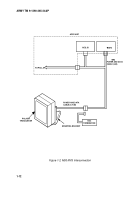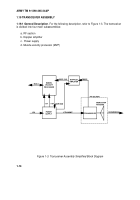TM-9-1290-365-24-P - Page 25 of 334
ARMY TM 9-1290-365-24&P
1.5 SAFETY, CARE, AND HANDLING.
1.5.1 Electrostatic Discharge (ESD) Awareness
. It is essential to understand the nature of
electrostatic discharge (ESD), what causes it, and the problems it can cause. This paragraph
contains information on the areas of major concern.
1.5.2 Typical Prime Charge Sources
. Means of generating electrostatic charges (voltage) and
their relationship to relative humidity are shown in Table 1-2.
Table 1-2. Means of Static Charge Generation
Means of Static Generation
Electrostatic Voltages-
10-20 Percent Relative
Humidity
Electrostatic Voltages-
65-90 Percent Relative
Humidity
Walking across carpet
35,000
1,500
Walking on vinyl floor
12,000
250
Worker at workbench
6,000
100
Vinyl envelopes for work instructions
7,000
600
Common poly bag picked up from bench
20,000
1,200
Work chair padded with polyurethane
foam
18,000
1,500
1.5.3 Prime Charge Carriers
. Personnel are the prime charge carriers with the greatest
potential of damaging ESD items. Activities such as walking, working at a table or bench, sliding
on a chair, or simply combing one's hair can generate static charges of thousands of volts with
high potential for damage to sensitive devices.
1.5.4
Items to Avoid
. The following items will generate sufficient charges to damage sensitive
items: all common plastics, spray cans, tape dispensers, heating guns, bubble packs,
polystyrene cups, cigarette papers and wrappers, paint cans, stencil ink applicators, common
poly bags and sheets, and plastic tape.
1.5.5 Handling Unpackaged ESD Sensitive Items
. Never store or transport ESD sensitive
components or assemblies outside of the protective packaging. The protective packaging
should not be opened or removed until the item is to be installed in the next higher assembly. At
this time, the technician should be grounded in an approved workstation. Avoid touching bare
leads and contacts on sensitive material. Never use plastic solder suckers to remove soldered
components from ESD sensitive assemblies. Use metallic or antistatic solder removal means.
1.5.6
Packaging and Labeling ESD Sensitive Items/Assemblies
. After replacement of a
sensitive circuit card assembly (CCA) or other subassembly into an instrument, the CCA that is
to be returned for repair must be repackaged in ESD protective material to prevent further
damage Mom handling and transit. For field returns, antistatic ziplock bags are available for
CCAs and other small assemblies. The container with the ESD sensitive material warning label
should also be used for returning defective material to ensure proper handling during shipment.
1-5
Back to Top

